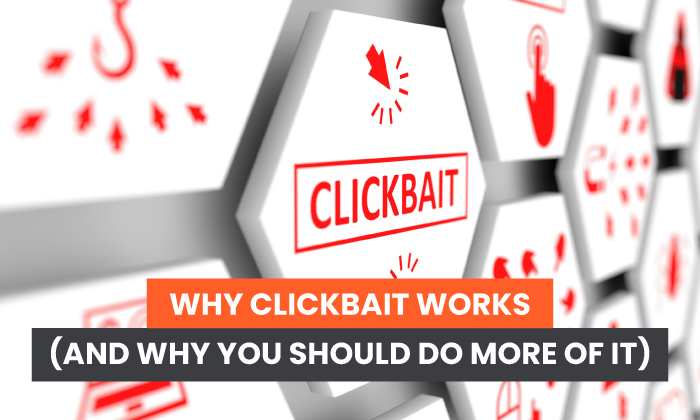
Clickbait has gotten a bad rap in recent years.
In the age of misinformation, people are hesitant to make sensationalist claims—and rightfully so.
When done right, though, clickbait is one of the most effective ways to get people’s attention and drive traffic towards your content.
What’s important is once you get them to your site, you offer more than just a catchy headline.
In this post, we’ll explain why clickbait works, how to do it ethically, and why you should be using more of it.
What Is Clickbait?
Clickbait is any content written to attract clicks. It can include any web content, from news articles to blog posts, infographics, videos, interviews, and more.
Clickbait content usually contains:
- a catchy or compelling headline
- a strong appeal to emotion
- scannable content optimized for web reading
- witty copy
- content aimed at social media sharing
Although widely attributed to online media, this type of content has been around since the dawn of print journalism. In the 19th century, when newspapers were fighting for circulation numbers, they found the best way to attract new visitors was using catchy headlines to entice readers.
Here’s an example from a 1913 version of New York World, a newspaper run by the infamous Joseph Pulitzer. As you can see, every headline is attention-grabbing, emotional, and aimed at hooking a read at first glance.
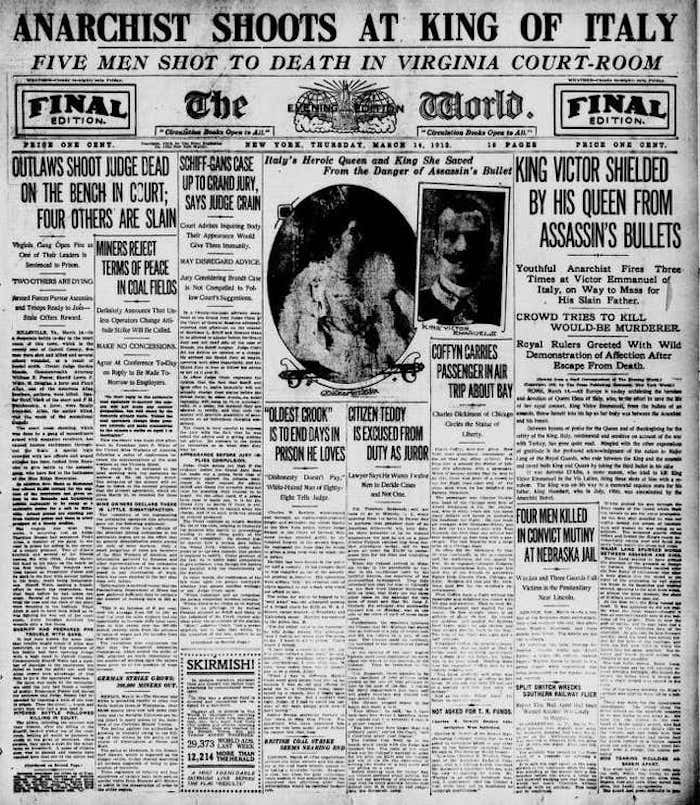
Fast forward to the 21st century, and catchy newspaper headlines have transformed into catchy blog titles.
With the introduction of SEO, and more brands wanting to increase traffic to their websites, clickbait titles had a mainstream resurgence.
Brands such as Buzzfeed, Upworthy, and Gawker began publishing popular listicle content like: “27 Famous Actors Who Tricked You Into Thinking They’re American” and “6 songs that seem romantic but aren’t, and one that seems like it isn’t but is.” This content was widely successful, primarily due to the popularity of social media and the virality of relatable content.
These days, it is used in almost every type of digital content, from “15 Marketing Tools You Need to Dominate Your Social Strategy” to “The Secret Behind My 1,866,913 Monthly Search Visitors.”
Types of Clickbait
Clickbait content can be anything, from blogs to videos, news articles, ads, and beyond.
The most common types include listicles, how-tos, and blog posts that capitalize on trending topics.
Here are a few examples of common headings:
- “The Ultimate Guide to _____”
- “X Ways to Improve Your _____”
- “A List of the Best _____ in L.A.”
- “The Secret to ______ That Will Change Your Life Forever”
- “Why We Love _____ and Why You Will, Too”
- “You’ll Never Guess What _____ Did Last Night”
Clickbait headlines can also be used on video platforms like YouTube. You’ll see an example of this below.
Why Clickbait Works
Clickbait often gets a bad rap online, mostly due to allegations about misleading content.
That being said, there are so many ways to leverage it ethically without misleading your readers.
It works because of its ability to tap into genuine human emotion and curiosity.
Everyone wants to know the secret to get more followers, just like everyone wants to know what weird things happen on movie sets.
This is called the curiosity gap and it is the psychological feeling of wanting to know more.
Most clickbait titles are structured to make the reader think they will learn something new by clicking on the link.
The important ethical note is to offer real value within your article, not simply using a misleading headline to get page traffic.
Clickbait is also an important part of measuring online success.
If no one clicks on your blog, then you lose the opportunity to talk to thousands of potential customers.
If you want to expand your reach, then you want more clicks. If you want more clicks, you need to build a strategy to get them.
That being said, you don’t need to resort to sensationalism to do this.
Instead, think about the goals of your audience. Our blog, for example, teaches readers about digital marketing techniques. While we may use catchy headlines, such as “The 10 Ingredients of Great Content Writing” or “19 Strategies That’ll Help You Become an Influencer,” we offer actionable information within those blogs that help our readers achieve their goals.
When using clickbait strategies, focus on your customer pain points and create content that will educate and excite them.
If your headline matches your content, you can avoid audience backlash.
Clickbait Strategies to Avoid
While clickbait can be a successful digital marketing strategy, it can also hurt your brand if done wrong.
Many social media sites and search engines have added rules to their policies to discourage the use of sensationalist or misleading content.
Google’s policy prohibits “Ads that use clickbait tactics or sensationalist text or imagery to drive traffic.” This can include:
- Ads that claim to reveal secrets or other sensationalist information.
- Ads that use wording such as, “Click here to learn more …” or, “You won’t believe what happened next …”
- Ads that use altered images or disaster photos.
- Ads that use “before and after” photos showcasing significant changes in the human body.
- Ads that use negative events, such as death, illness, or disaster, to evoke action in viewers.
On Facebook, clickbait articles will show up lower in News Feeds and repeated sharing can result in page restrictions.
It’s also important to avoid misleading clickbait on your website, as it can damage trust in your brand.
Ultimately, success comes down to two things:
- Write compelling, honest, engaging headlines.
- Don’t disappoint your readers once they click on them.
Tips to Use Clickbait in Your Content Marketing Strategy
Now that you know how to use clickbait ethically, it’s time to implement these strategies into your content marketing.
Here’s how to get started:
- Utilize the curiosity gap, but don’t exploit it. Avoid sensationalist material and inaccurate claims.
- Deliver on any promises you make. Your audience expects the information you promise to them. If they consistently feel they can’t trust your claims, they won’t continue interacting with your brand.
- Be honest with your readers and avoid misinformation. Be a beacon of honesty. According to Edleman, 53 percent of consumers need to trust brands they purchase from. If you remain truthful with your viewers, you’ll have a better chance of converting them.
- Use numbers in your headlines. Numbers represent actionable steps users can use to reach their goals. Numbered lists also improve scanability and make it easier for readers to digest content.
- Pay attention to your data. When using clickbait headlines, measure them against other headlines and see which perform better. Like anything in marketing, the numbers don’t lie. There’s no point investing in a tactic if it doesn’t work for your audience.
- Write for more than clicks. A headline is just the beginning. What really matters is the quality of your content as a whole. While a witty headline may bring them to your page, your content will make them stay—so don’t neglect the rest.
Examples of Great Clickbait Strategies
Now that you know what not to do, let’s take a look at some clickbait strategies done right.
When Shopify and Google teamed up to promote Shopify Premium plans, they knew the best way to get people interested was to offer them something in return.
Using their media leverage, they featured their offer in the Daily Mail, offering a free Google smart speaker to anyone who signed up for Premium.
Everyone loves the word FREE!
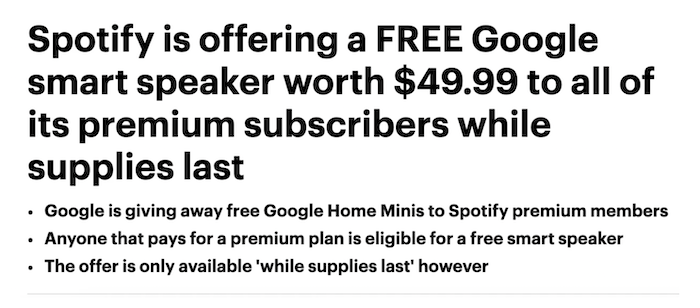
Smartwatch brand Blocks also leveraged clickbait headlines in its Kickstarter campaign.
By using numbers, Blocks displays the high worth of its product, public trust in the campaign, and scarcity.
Not only will users who read this headline trust a large community supports Blocks, but they will also feel motivated to act immediately before the campaign ends.
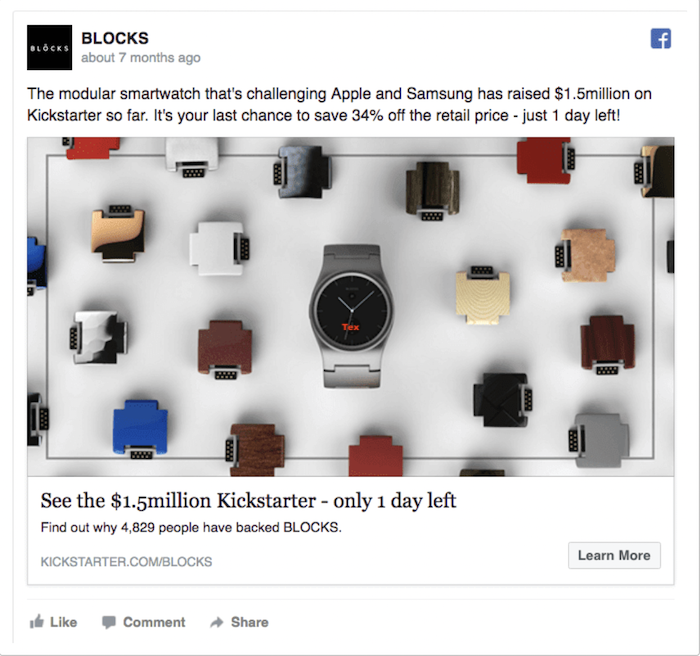
Another great example of clickbait in ads comes from One Smart Penny, a financial advice blog.
In their ad, they use the curiosity gap, by alluding to a secret you’ll only find out if you read the blog. They also leverage the power of celebrity with a feature by Barbara Corcoran, which brings an element of social proof to the ad.
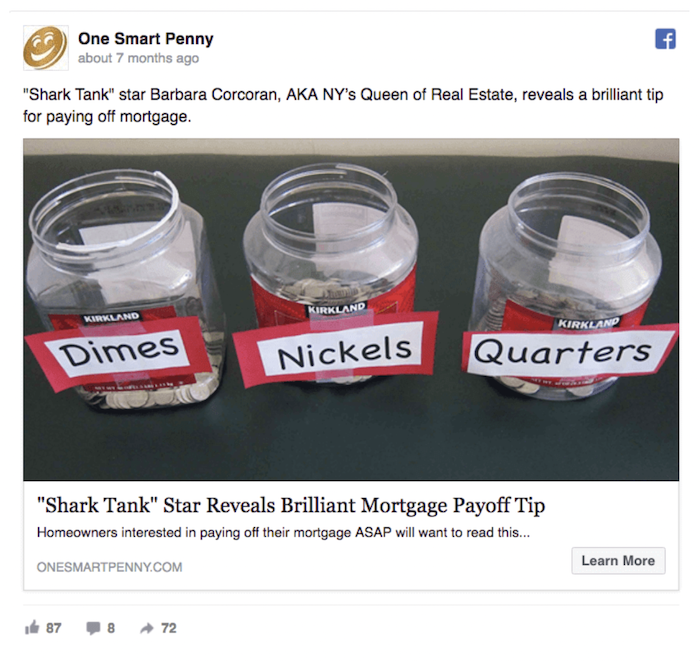
How to Create a Clickbait Headline
Ready to start writing your own? Follow these steps to write a great headline that drives clicks.
1. Use Google Alerts to Find Out What’s Trending
Leveraging popular trends and news is a great way to engage your users.
By setting up Google Alerts for trending or viral topics, you can stay ahead of your competition and be the first to break the news to your audience.
Pair your trending headlines with relevant keywords to boost your SEO.
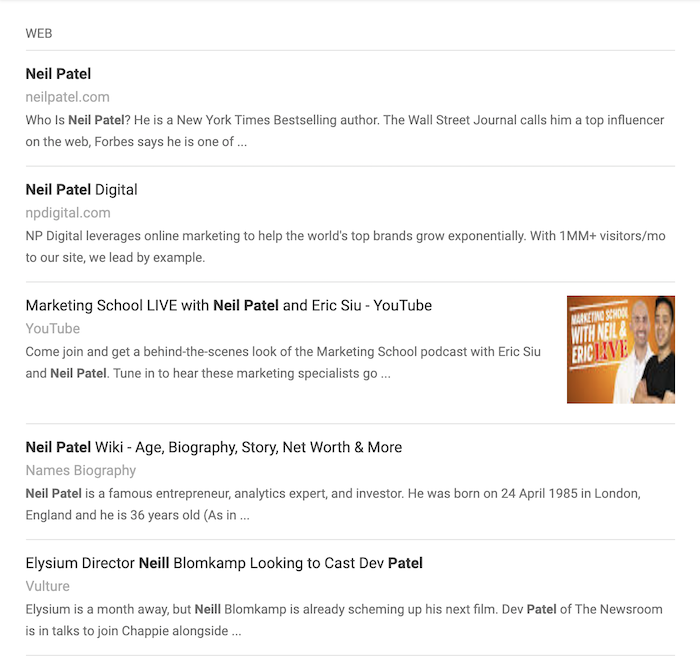
2. Use Numbers or Listicle Format
Numbers are a time-honored blogging trend that increases reader engagement.
Numbers in blog titles are effective because they show your readers there will be actionable steps to follow and the content will be easy to scan.
Because online users are looking for quick, efficient information, they prefer content they can easily access and ingest.
Numbers also imply the presence of a listicle, which are often the most shared blog types on the internet.
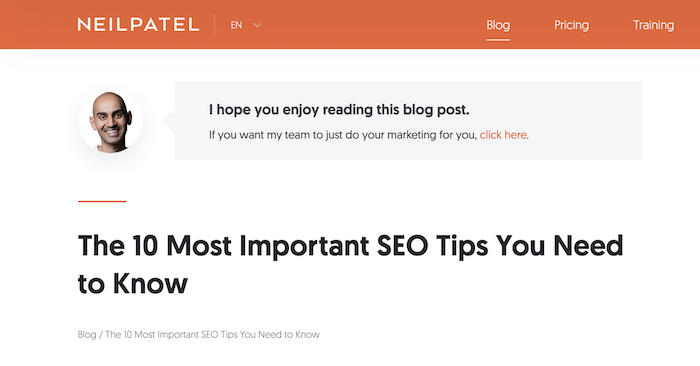
3. Offer Immediate Value to Your Reader
Offering immediate value is a great way to encourage clicks on your post.
You can offer physical value through discounts, free products, consultation services, and more. Or, you can offer something less tangible, such as a secret or an industry trick.
When using this clickbait strategy, be sure to follow through with your promise in your post.
No one wants a misleading headline, and if you don’t seem trustworthy, you’ll lose your audience’s attention.
4. Use a Teaser
One of the best clickbait strategies is to use a teaser in your headline.
By suggesting the reader will find something they don’t already know in your post, you’re leveraging the curiosity gap and creating immediate engagement.
A teaser can be a number of things, from “The X things you wish you knew…” or, “You’ll never guess what ____ did in Paris”.
As we said before, be sure to follow through with your teaser in the body of your post to avoid annoying your audience.
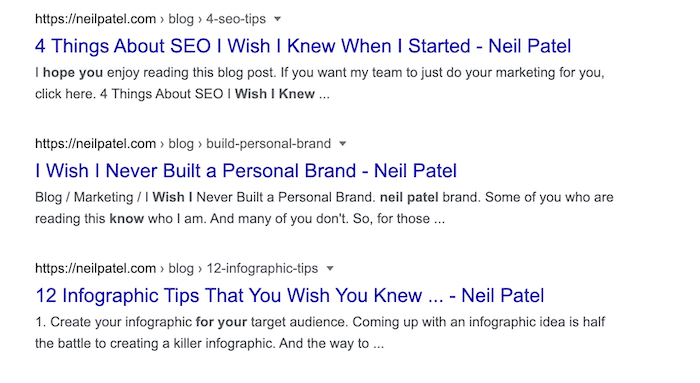
Clickbait FAQs
Neither. It is a powerful marketing strategy if used correctly. There’s nothing wrong with encouraging clicks on your post, as long as you’re offering value to your audience that goes beyond the headline.
The goal is to grab a user’s attention and encourage clicks on your content.
Yes, though it is different now. Because of the prevalence of misinformation online, many entities now have regulations in place to discourage misuse of clickbait headlines. Yet there are still ethical and productive ways to use this tactic.
It works in our curiosity gap and piques our interest in topics or news.
Why Clickbait Still Works Conclusion
Although it often gets bad press, clickbait is an important marketing strategy that can help improve traffic to your content or website.
When using this strategy, it’s important to be ethical and not mislead your users or capitalize on negative content just to boost your views.
If you believe in your content and think it will benefit your users, then there’s no reason to feel bad about crafting enticing titles.
What is your favorite kind of clickbait headline?
from Blog – Neil Patel https://ift.tt/2T1zyf1
via IFTTT
No comments:
Post a Comment